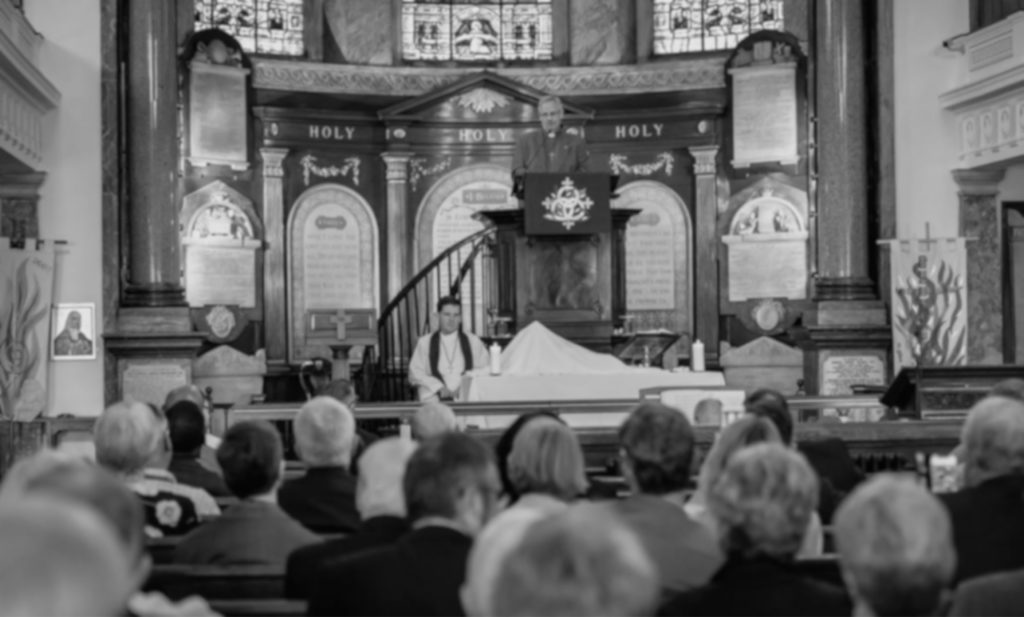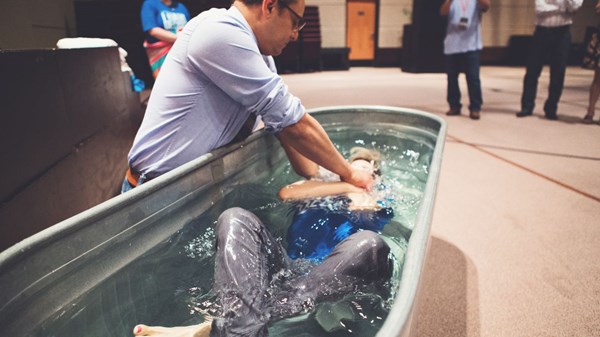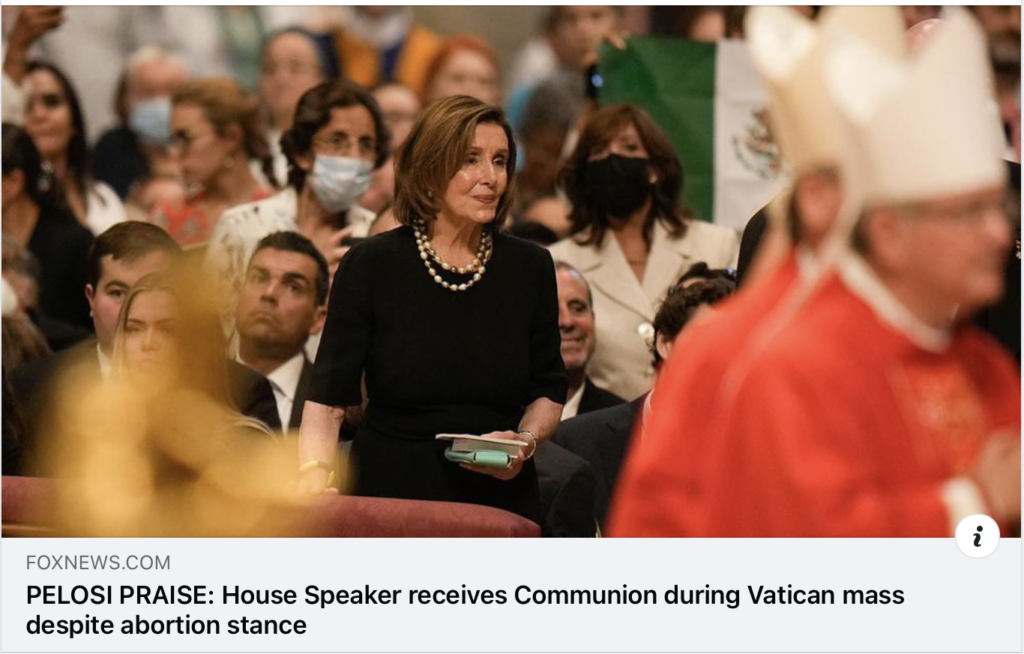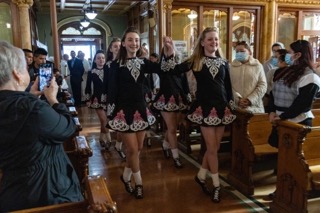
The result [of the post-conciliar liturgical reform] has not been a reanimation, but devastation. In place of the liturgy, fruit of a continual development, they have placed a fabricated liturgy … a banal product of the moment.
The above quote from Cardinal Josef Ratzinger (Revue Theologisches, Vol. 20, Feb. 1990, pgs. 103-104) is familiar to all. But how did this happen? Was it due to the revolutionary force of Vatican II, or did it come about despite the Council’s best efforts?
It is my opinion that even if the reformers had slavishly adhered to the Constitution on the Sacred Liturgy – including every one of its much ballyhooed, tradition-affirming proposals (the use of the Latin language, pride of place for Gregorian chant, etc.) – still, the revised rite would have emerged as a banal, fabricated, product of the moment.
In this article, we will undertake a somewhat lengthy review of the conciliar text, one that will plainly demonstrate that it was indeed the revolutionary force of Vatican II that set in motion the post-conciliar liturgical devastation to which Cardinal Ratzinger referred. Readers will discover that the “principles and norms” (cf SC 3) set forth in the Constitution on the Sacred Liturgy of Vatican II amount to the perfect recipe for a revised rite that is overwhelmingly earthbound and only nominally Catholic.
The Constitution’s proposals largely speak for themselves. However, in order to truly grasp their revolutionary force – that is, the impact they were intended to have on the process of reform moving forward, at least insofar as the powerful minority of modernist bishops that drove the entire conciliar enterprise is concerned – one must interpret the text by employing what I’ve called the hermeneutic of cohesion. [See HERE]
Let’s begin…
Below I will provide citations from the conciliar text, mostly Sacrosanctum Concilium, in boldface, followed by my own commentary.
This sacred Council has several aims in view: it desires to impart an ever increasing vigor to the Christian life of the faithful; to adapt more suitably to the needs of our own times those institutions which are subject to change; to foster whatever can promote union among all who believe in Christ; to strengthen whatever can help to call the whole of mankind into the household of the Church. The Council therefore sees particularly cogent reasons for undertaking the reform and promotion of the liturgy. (SC 1)
The tone is thus set: Ecumenism is the major impetus behind the Council’s urgent call for a revision of the sacred liturgy, setting the stage for a something-for-everyone rite that would have broad appeal to all who call themselves Christian.
At this, it is necessary to consider exactly to whom the Council is referring when it speaks of the “faithful,” the “people,” the “Christian people,” etc., expressions invoked well over fifty times throughout the Constitution.
Given the ecumenical aims of the desired reform, the logical place to look for an answer is obvious, namely, the Decree on Ecumenism, Unitatis Redintegratio:

Even in the beginnings of this one and only Church of God there arose certain rifts … The children who are born into these [heretical and schismatic] Communities and who grow up believing in Christ cannot be accused of the sin involved in the separation, and the Catholic Church embraces upon them as brothers, with respect and affection. For men who believe in Christ and have been truly baptized are in communion with the Catholic Church even though this communion is imperfect … all who have been justified by faith in Baptism are members of Christ’s body, and have a right to be called Christian, and so are correctly accepted as brothers by the children of the Catholic Church. (UR 3) [Emphasis added]
As the above makes plain, “all who believe in Christ” as invoked in SC 1 includes the heretics and schismatics. The Council considers them “Christian,” and even goes so far as to declare that they are “members of Christ’s body … in communion with the Catholic Church,” albeit imperfectly.
NB: As it relates to the “principles and norms” for liturgical reform that follow, the heretics (and to a much lesser extent, the schismatics) are the Council’s chief concern. Bear this well in mind as we proceed.
The ecumenical focus of the liturgical reform as proposed by the Council is made even more explicit in the following:
For the aim and object of apostolic works is that all who are made sons of God by faith and baptism should come together to praise God in the midst of His Church, to take part in the sacrifice, and to eat the Lord’s supper. (SC 10)
NB: “All who are made sons of God by faith and baptism” includes non-Catholics.
This tells us something very important: It means that the “end game” of the desired reform is intercommunion! That is to say, the Council is proposing the “principles and norms” that will hasten the day when Catholics, heretics, and schismatics will gather together “to eat the Lord’s supper.”
In order for that to vision to materialize, one of two things must happen: Either the heretics must “return to the one true Church of Christ” (cf Pius XI, Mortalium Animos 10) – a concept conspicuously absent from the Council’s Decree on Ecumenism – or the rite itself must be remade in such a way as to accommodate them.

Mother Church earnestly desires that all the faithful should be led to that fully conscious, and active participation in liturgical celebrations which is demanded by the very nature of the liturgy. Such participation by the Christian people as “a chosen race, a royal priesthood, a holy nation, a redeemed people,” is their right and duty by reason of their baptism. In the restoration and promotion of the sacred liturgy, this full and active participation by all the people is the aim to be considered before all else … Pastors of souls must promote the liturgical instruction of the faithful, and also their active participation in the liturgy both internally and externally (SC 14, 19) [Emphasis added]
The phrase “active participation” is well known, and yet it is largely misunderstood as applying exclusively to the Catholic laity. Clearly, when read according to the Council’s own definition of “all the people,” it is meant to include (if not stress) the heretics.
Most readers have witnessed how this plays out in the Novus Ordo: Non-Catholics (even Jews and others!) are invited to carry up the “gifts,” and they are encouraged to come forward to receive a blessing during the distribution of Communion.
When asked about the latter for a Q&A published by Zenit (and posted at the EWTN website), Fr. Edward McNamara wrote:
Certainly this blessing is not in the rubrics and there is no obligation to make such an invitation. However, neither is there any prohibition and the practice seems to have been tacitly accepted by many bishops who are aware of this nascent custom and have even participated in giving such blessings.
“Not in the rubrics but not prohibited” is precisely the sort of liturgical approach one might expect to find in a something-for-everyone rite such as that inspired by the conciliar “principals and norms” under review.
Non-Catholics have even been known to receive Communion at the Novus Ordo.
But this is a liturgical abuse!
Really? Don’t be so sure.
John Paul II, whose entire twenty-six-year reign was dedicated to the interpretation and implementation of Vatican II, had this to say:
It is a source of joy to note that Catholic ministers are able, in certain particular cases, to administer the sacraments of the Eucharist, Penance and Anointing of the Sick to Christians who are not in full communion with the Catholic Church but who greatly desire to receive these sacraments, freely request them and manifest the faith which the Catholic Church professes with regard to these sacraments. (Ut Unum Sint, On commitment to Ecumenism, 46 [1995], repeated verbatim in Ecclesia de Eucharista, 46 [2003])

Pay close attention: According to the above, if a heretic freely approaches Communion – no “danger of death” necessary – and somehow “manifests” faith in the Real Presence, he is welcome to receive. Never mind whether or not that person flatly rejects the papacy, is gay “married,” adamantly disagrees with the Immaculate Conception, etc. In other words, the heretic need not even have the intention of entering into so-called “full communion” with the Catholic Church.
The frequency with which this may or may not happen is entirely irrelevant; the salient point is this:
John Paul II, who possessed the fullness of authority necessary to provide an authentic interpretation of the Council, plainly and without ambiguity explained how its “principals and norms” for liturgical reform, understood in the light of the Decree on Ecumenism, are properly implemented. He should know; he was one of the bishops present at Vatican II.
That said, it is a well known fact that non-Catholics routinely receive Communion in the Novus Ordo.

Once one is cognizant of the fact that the Council is referring primarily to heretics and schismatics when it speaks of “the Christian people” (among other names), the ecumenical theme jumps off the page:
In order that the Christian people may more certainly derive an abundance of graces from the sacred liturgy, holy Mother Church desires to undertake with great care a general restoration of the liturgy itself … In this restoration, both texts and rites should be drawn up so that they express more clearly the holy things which they signify; the Christian people, so far as possible, should be enabled to understand them with ease and to take part in them fully, actively, and as befits a community. (SC 21) [Emphasis added]
There is a reason the Holy Sacrifice of the Mass is often called a “celebration of the sacred mysteries.” In this case, “mystery” does not refer to the entirely unknowable, but rather to ineffable supernatural realities so profound that we are only able to grasp at them via signs and symbols. One could spend an entire lifetime contemplating the glories of Holy Mass and only scratch the surface.
It is folly, therefore, to imagine that the sacred liturgy should be understood with ease even by pious, devout Catholics. It is the height of absurdity to suggest that the Roman Rite should be reformed in such a way that Protestants can understand it with ease.
Is it any wonder the Novus Ordo is so anthropocentric and worldly, scarcely resembling a Catholic rite?
Sacred scripture is of the greatest importance in the celebration of the liturgy … Thus to achieve the restoration, progress, and adaptation of the sacred liturgy, it is essential to promote that warm and living love for scripture… (SC 24)
Here, the Council makes a claim that is most dubious indeed. Yes, a warm and living love for Scripture is necessary. After all, “ignorance of Scripture is ignorance of Christ,” as St. Jerome said.
Even so, while Sacred Scripture is an important part of the liturgy, it is by no means “of the greatest importance.” So why did the Council insist otherwise? This is perplexing, that is, until one is reminded of the ecumenical aims that are being served.
You see, in the prayer services conducted by the heretics, Scripture truly is of the greatest importance; it is the centerpiece of their public worship. With this in mind, it is clear that the “principle and norm” being proposed in SC 24 is just another transparent attempt to placate Protestants, to craft a rite that meshes well with their spiritually impoverished sensibilities.
Far worse, however, is that SC 24 insinuates that the Holy Sacrifice of the Altar is somehow less important than the bible, at best, second in importance.
In many Novus Ordo parishes, the tabernacle has been relegated to a place of relative obscurity, even out of the sanctuary altogether, while the ambo (or lectern) remain as prominent as ever. Did the Council explicitly prescribe this? No, but ask yourself: Does not the revolutionary force of the conciliar text compel as much?
The liturgical books are to be revised as soon as possible; experts are to be employed on the task, and bishops are to be consulted, from various parts of the world. (SC 25)
Why the urgency? I am aware of no historical accounts relating how a sizable number of pre-conciliar Catholics were clamoring for a revision of the liturgy. Could it be that the powerful minority driving the conciliar process were fearful that a pope with an abiding love for Catholic tradition might ascend to the Throne of St. Peter before their dreams could be realized?
It is to be stressed that whenever rites, according to their specific nature, make provision for communal celebration involving the presence and active participation of the faithful, this way of celebrating them is to be preferred, so far as possible, to a celebration that is individual and quasi-private. (SC 27)
Later, in the same article, the Council correctly states, “Every Mass [with or without an assembly] has of itself a public and social nature” (ibid.). Why, then, is a celebration involving the presence and active participation of the faithful to be preferred? [NB: This is a good example of the competing and often conflicting ideas that are present in the conciliar text.]
The answer is obvious, it is because the Protestant mind simply cannot grasp that a “service” conducted by “ministers” alone is of infinite value to the entire Church and her members, much less the entire world. For the heretics, the value of public worship is reduced to nil apart from the “fellowship” of those present.
To promote active participation, the people should be encouraged to take part by means of acclamations, responses, psalmody, antiphons, and songs, as well as by actions, gestures, and bodily attitudes. (SC 30)
Does not the above take on new meaning when it is understood that “the people” includes heretics? For example, consider how often the Novus Ordo is adorned with Protestant songs, secular gestures (shaking hands), and texts that are open to all manner of interpretation.
Norms based upon the didactic and pastoral nature of the Liturgy (Subheading C)
Here, we find yet another dubious claim, namely, that the liturgy of its very nature is “didactic.” Yes, the liturgy nurtures and forms, but it is not a teaching tool, meeting, or seminar. Once again, the Council is attempting to impart a characteristic to the Catholic rite that more properly belongs to the services of the heretics.
Moreover, the prayers addressed to God by the priest who presides over the assembly in the person of Christ are said in the name of the entire holy people and of all present. (SC 33)
How often it has been lamented in the post-conciliar period that priests are looked upon as mere “presiders” at Mass, with far too many of them behaving more like a gameshow host than a consecrated intercessor before Almighty God. Now you know where that notion was born. Once again, the Council is attempting to impose upon the Mass a characteristic that is proper to the Protestant service, in this case, its minister.
Moreover, as the Council met, it simply was not true that the prayers of the priest at Holy Mass were “said in the name of the entire holy people and of all present,” some were, while others were said in the priest’s name alone.
The rites should be distinguished by a noble simplicity; they should be short, clear, and unencumbered by useless repetitions; they should be within the people’s powers of comprehension, and normally should not require much explanation. (SC 34)
The call for “shortness” in the reformed rite (to say nothing of calls to dumb it down) appears multiple times in the text. One wonders, is the Mass of Ages inordinately long? Not to an authentic member of the Catholic Church, but to a Protestant…
That the intimate connection between words and rites may be apparent in the liturgy: In sacred celebrations there is to be more reading from holy scripture, and it is to be more varied and suitable. (SC 35 §1)
Is it really the case that the “connection between words and rites” (whatever that means) in the Mass of Ages is less than apparent? The very suggestion is idiotic. Once again, the comfort of the heretic is the impetus. “More reading of Scripture” simply means “more like a Protestant service.”
The emphasis on words in SC 35 is a stealthy attempt to de-emphasize gestures, e.g., genuflecting, kneeling, and even the Sign of the Cross (which the priest performs fifty-two times in the one true Roman Rite), each of which is a source of discomfort for the majority of heretics.
The typical Protestant service is mainly comprised of three things: A communal gathering (addressed in SC 27 above), bible reading (addressed in SC 35 §1) and preaching, which is addressed in the text immediately following:
The sermon, moreover, should draw its content mainly from scriptural and liturgical sources, and its character should be that of a proclamation of God’s wonderful works in the history of salvation, the mystery of Christ, ever made present and active within us, especially in the celebration of the liturgy … the homily, therefore, is to be highly esteemed as part of the liturgy itself. (SC 35 §2, SC 52)
At this point, I trust that it’s not necessary to provide the reason for this focus on preaching. Elsewhere, the Council stresses the falsehood that “preaching” is the bishop’s and priest’s first duty. In truth, it is the offering of the Holy Sacrifice of the Altar.
Among the principal duties of bishops, the preaching of the Gospel occupies an eminent place. (Lumen Gentium, 25) Priests, as co-workers with their bishops, have the primary duty of proclaiming the Gospel of God to all (Presbyterorum Ordinis, 4)
Note that missing from the “norms” for the sermon (SC 35, 52) is any mention of catechetical, doctrinal or moral instruction, i.e., let us not offend those who cling to heresy.
Instruction which is more explicitly liturgical should also be given in a variety of ways; if necessary, short directives to be spoken by the priest or proper minister should be provided within the rites themselves. But they should occur only at the more suitable moments, and be in prescribed or similar words. (SC 35 §3)
Once more, the paramount importance of ensuring the comfort of non-Catholics is apparent. Evidently, the architects of the Constitution had visions of Protestants flocking to the newly revised, heretic-friendly rite, and wished to encourage “presiders” to provide on-site guidance to their non-Catholic guests.
Bible services should be encouraged, especially on the vigils of the more solemn feasts, on some weekdays in Advent and Lent, and on Sundays and feast days. They are particularly to be commended in places where no priest is available; when this is so, a deacon or some other person authorized by the bishop should preside over the celebration. (SC 35 §4)
Note that “bible services” are being encouraged even when a priest is available! And even on Sundays! In fact, the Council presumes that a priest will be available; it is only when he is not that “a deacon or some other person authorized” is called to preside.
But since the use of the mother tongue, whether in the Mass, the administration of the sacraments, or other parts of the liturgy, frequently may be of great advantage to the people, the limits of its employment may be extended. (SC 36 §2)
It is my hope and expectation that, by this point in our exercise, the reader is keenly aware that “the people” mentioned above concerns the heretics first and foremost. Indeed, it is their “advantage” that is the Council’s primary concern: There was no widespread outcry on the part of Latin Rite Catholics for a vernacular Mass and sacraments prior to the Second Vatican Council.
…whether, and to what extent, the vernacular language is to be used; their decrees are to be approved, that is, confirmed, by the Apostolic See … Translations from the Latin text into the mother tongue intended for use in the liturgy must be approved by the competent territorial ecclesiastical authority mentioned above. (SC 36 § 3,4)
The above is especially important for those who are tempted to dismiss any doctrinal errors, irregularities, or omissions that are present in the approved translated text of the Novus Ordo Missal, as if the “Apostolic See” is only responsible for the normative Latin text. All liturgical roads lead to Rome and its bishop.
Even in the liturgy, the Church has no wish to impose a rigid uniformity in matters which do not implicate the faith or the good of the whole community (SC 37)
This is just plain false. While a multiplicity of rites exist within the Church, there is great uniformity in the way each rite is celebrated. Anyone who has assisted at the Mass of Ages in various places (even globally) at various times can attest to the fact that “rigid uniformity” does indeed exist, imposed as it is by the rubrics, and furthermore, it serves “the good of the whole community.”

Provisions shall also be made, when revising the liturgical books, for legitimate variations and adaptations to different groups, regions, and peoples, especially in mission lands, provided that the substantial unity of the Roman rite is preserved; and this should be borne in mind when drawing up the rites and devising rubrics. (SC 38)
It is the case that, prior to the Council, liturgical accommodations have been made in some mission lands, albeit rarely and on a very limited basis. Here, by contrast, the Council is urging much more widespread variations and adaptations, even as it applies to “different groups.”
Is it any wonder no two diocesan Novus Ordos are the same? Indeed, incredibly divergent liturgies are frequently offered within a single parish on any given Sunday. In general, the Novus Ordo varies according to the “presider’s” personality. It is no coincidence that the same can be said of a Protestant bible service.
In some places and circumstances, however, an even more radical adaptation of the liturgy is needed… (SC 40)
Why would such a thing ever be needed? The Church was never compelled to radically adapt the liturgy before the Council, and yet, Mass attendance was high and her missionary activities were flourishing as the Constitution was being drafted.
Once again, the answer is plain: The revolutionaries were intent on providing principles and norms that might lead to a rite that is akin to the services of the Protestants, in the case of SC 40, one that is malleable according to the appetites and aptitudes of practically any group, in any place, at any time.
That more perfect form of participation in the Mass whereby the faithful, after the priest’s communion, receive the Lord’s body from the same sacrifice, is strongly commended. (SC 55)
When one receives Holy Communion from that which has been reserved in the tabernacle, is the form of participation somehow less perfect? Of course not. Once again, this recommendation is being made to appease the Protestant mindset whereby the bread and wine are merely symbolic, their reception, a mere meal shared in fellowship.
In the view of the heretics, the Blessed Sacrament in reservation is leftovers. It is to them that the Council is catering (no pun intended).
Zeal for the promotion and restoration of the liturgy is rightly held to be a sign of the providential dispositions of God in our time, as a movement of the Holy Spirit in His Church. It is today a distinguishing mark of the Church’s life, indeed of the whole tenor of contemporary religious thought and action. (SC 43)
One will not be surprised that strikingly similar language is used in the Decree on Ecumenism:
In recent times more than ever before, God has been rousing divided Christians to remorse over their divisions and to a longing for unity. Everywhere large numbers have felt the impulse of this grace, and among our separated brethren also there increases from day to day the movement, fostered by the grace of the Holy Spirit, for the restoration of unity among all Christians. This movement toward unity is called “ecumenical.” (UR 1)
Applying the hermeneutic of cohesion to these texts reveals that the Council considers the so-called “restoration of the liturgy” and the “restoration of unity” (ecumenism) to be one and the same effort, the entire enterprise inspired by a contemporary “movement of the Holy Spirit.”
Much more could be written, but at this point the case has presumably been made.
If, by chance, the reader is as yet unconvinced of the Council’s commitment to a liturgical reform that serves unfettered ecumenical aims, the Appendix to Sacrosanctum Concilium should put to rest any remaining doubt:
The Sacred Council would not object if the feast of Easter were assigned to a particular Sunday of the Gregorian Calendar, provided that those whom it may concern, especially the brethren who are not in communion with the Apostolic See, give their assent. [Emphasis added]
Get that? The Council is OK with instituting a profound change to the Catholic liturgical calendar for the most solemn of Feast Days, but only if the heretics and schismatics are cool with it.
Having concluded our less-than-exhaustive exercise, it would seem that only the willfully ignorant can overlook the impact brought to bear on the liturgical reform via the Council’s revolutionary force.
Indeed, it is undeniable that the principles and norms set forth in Sacrosanctum Concilium are a blueprint for exactly what the Novus Ordo is, an anthropocentric and worldly rite with a discernible Protestant pedigree.
The crucial question that every serious Catholic must ask concerns whether or not such a rite truly comes from, and belongs to, Holy Mother Church.


